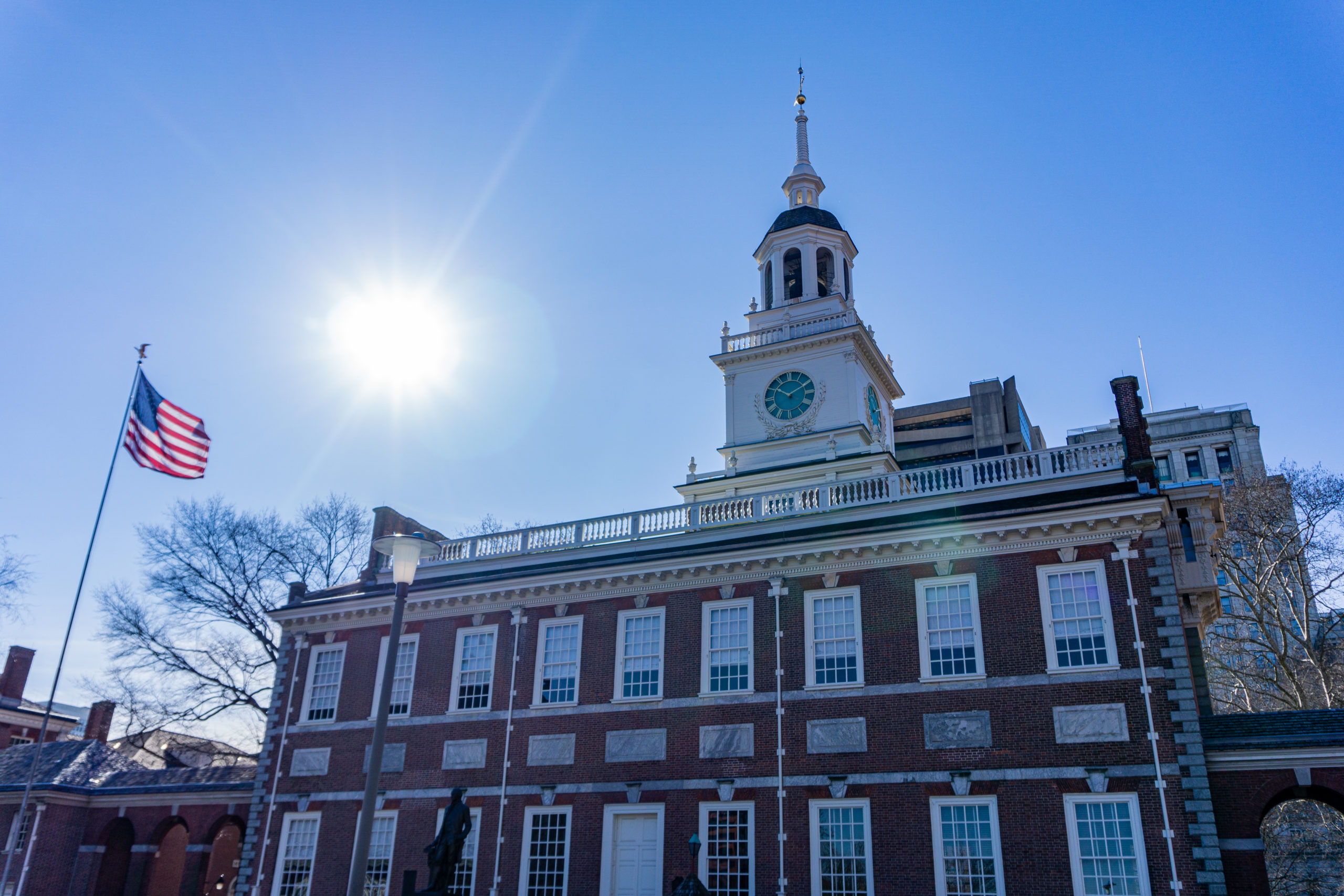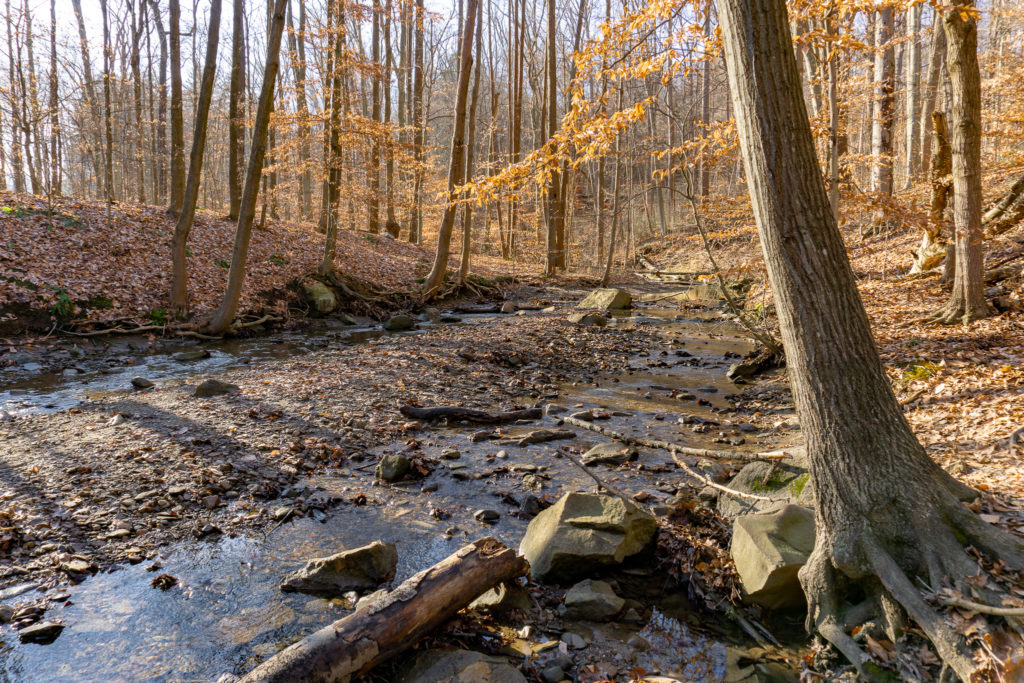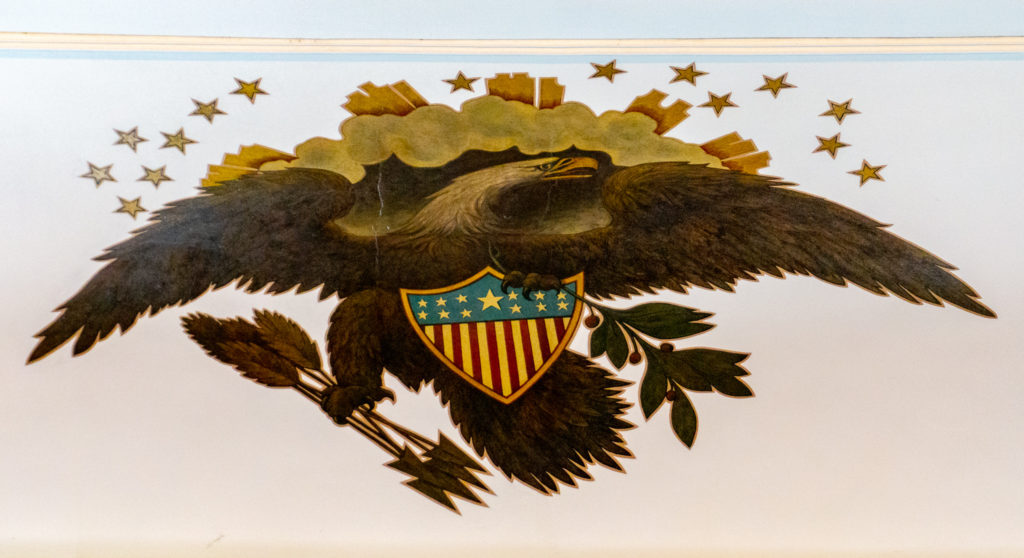What’s not to love about Philadelphia? Well, maybe not the Flyers or the Eagles (Pittsburgh homer, here) but all sports banter aside, Philly truly is one of the great American cities. After all, it is the birthplace of the United States. The city is rich in history and culture. Therefore, it’s no surprise that the Philadelphia region is home to five national parks – or five sites which are managed by the National Park Service.

National Parks in Philadelphia
Of these five sites, three are located directly in the city of Philadelphia. These sites can be easily reached, either on foot or by public transportation. The two remaining sites are both located northwest of Philly and will require a little bit of driving (less than an hour one way, depending on traffic of course.) With some moderate planning and some determination, all five national parks in and near Philadelphia are easy to visit in a couple of days.
Table of Contents
National Parks in Philadelphia

Independence National Historical Park
It goes without saying that the most historically significant of the national parks in Philadelphia is Independence National Historical Park. This park is fairly large and is comprised of dozens of buildings, monuments, memorials and other historic sites. Most of these are contained within a plaza known as Independence Mall. The main feature of this park is Independence Hall. Construction was completed in 1753 for what was originally the Pennsylvania State House, and it would become one of the most important buildings in United States history. Independence Hall is where both the Declaration of Independence and the United States Constitution were established and signed, in 1776 and 1787 respectively. Furthermore, the Second Continental Congress met here from 1775 until 1783.

Independence Hall was designated a UNESCO World Heritage Site in 1979 for its outstanding universal value, placing it in the same ranks with world wonders such as the Pyramids at Giza and the Great Wall of China.

Another famous component of Independence National Historical Park is the Liberty Bell Center, which houses the Liberty Bell. This symbol of the city of Philadelphia originally hung in the steeple of Independence Hall. However, it was replaced by the Centennial Bell in 1876. Other features of this National Park Service site include:
- Congress Hall
- Carpenters’ Hall
- Free Quaker Meeting House
- Old City Hall
- Declaration House
- Tomb of the Unknown Revolutionary War Soldier
- Christ Church
- City Tavern
- First Bank of the United States
- Second Bank of the United States
- Washington Square
All of the sites comprised within Independence National Historical Park can be reached on foot. However, given the large number of places to see, it may require quite a bit of walking.
Edgar Allan Poe National Historic Site

One of the most famous American authors and poets, Edgar Allan Poe was most well-known for utilizing dark themes in his literature. Poe lived in many different cities during his lifetime, but he spent six years of it in Philadelphia. Not all six years were spent in the same residency. However, the house preserved at Edgar Allan Poe National Historic Site is the only house in Philadelphia of his which survives today.

This National Park Service site was rented by Edgar Allan Poe and his family in 1843. Much speculation surrounds Poe’s stories as to which ones were written in this house, but there is no concrete evidence.
Thaddeus Kosciuszko National Memorial
The final of the Philadelphia national parks located within the city is the Thaddeus Kosciuszko National Memorial. This site is the home of Tadeusz (Thaddeus) Kościuszko, a Polish patriot and hero of the American Revolutionary War. He made this building at 301 Pine Street his home after his return to the United States. This move followed his wounding, capture, imprisonment, and banishment from Poland, which was occupied by Russia at the time.
While he recuperated from his war-time wounds, Thaddeus Kosciuszko was visited at this house by Vice President Thomas Jefferson. While this site is administered under Independence National Historical Park, it is considered a separate unit within the National Park Service.
An interesting fact – Thaddeus Kosciuszko National Memorial is the smallest site within the National Park Service, at only 0.02 acres!
National Parks near Philadelphia
In addition to the three sites in Philadelphia, visit these two National Park Service sites nearby!

Valley Forge National Historical Park
Located roughly 45 minutes from downtown Philadelphia, is Valley Forge National Historical Park. Valley Forge is most famous for being the site of the third winter encampment of the Continental Army. The encampment lasted six months from 1777 to 1778 and was commanded by General George Washington. It is one of the National Park Service Sites in Pennsylvania. Valley Forge earned its “National Historical Park” designation on July 4, 1976 – the bicentennial of the Declaration of Independence.

At its peak, the encampment at Valley Forge was home to 12,000 soldiers and their families. Features of Valley Forge National Historical Park include several monuments and memorials to the American Revolution. Furthermore, reconstructed log cabins are scattered throughout the property. George Washington’s Headquarters (where he stayed during the encampment) can also be found at this National Park Service Site.
Hopewell Furnace National Historic Site

Another 30 minute drive from Valley Forge is Elverson, Pennsylvania and Hopewell Furnace National Historic Site. This National Park Service site is America’s finest example of a former rural “iron plantation”. Furthermore, it is one of the earliest American industrial landscapes. Hopewell Furnace is comprised of 14 different restored building and structures from the 18th and 19th centuries. This includes historic pieces such as a blast furnace and a blacksmith’s shop.

Located 50 miles northwest of Philadelphia, Hopewell Furnace was founded in 1777 by iron master Mark Byrd. The industrial site saw the most prosperity between 1820 and 1840. Moreover, production levels also increased later on due to demands from the American Civil War. New methods and technologies in ironmaking rendered the facility obsolete. Consequently, operations at Hopewell furnace ceased in 1883.
View the Complete List of US National Park Service Sites I’ve Visited!





I love Philly. Great article, I’ll keep this saved for my next trip to Philly.
Jeremiah,
Thanks for the comment! It really is a great city.
Best,
Cody